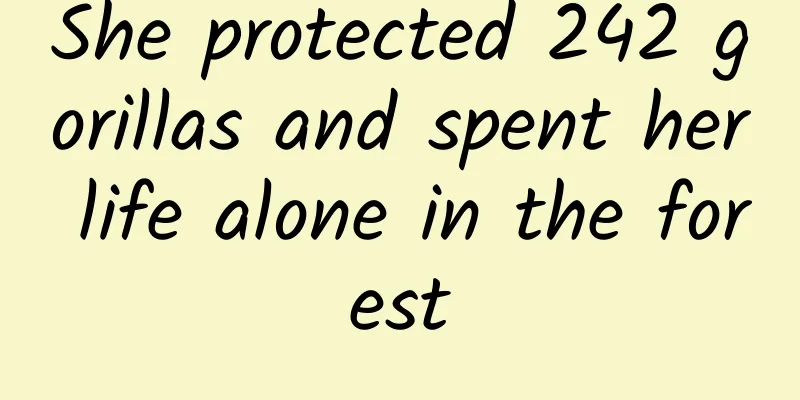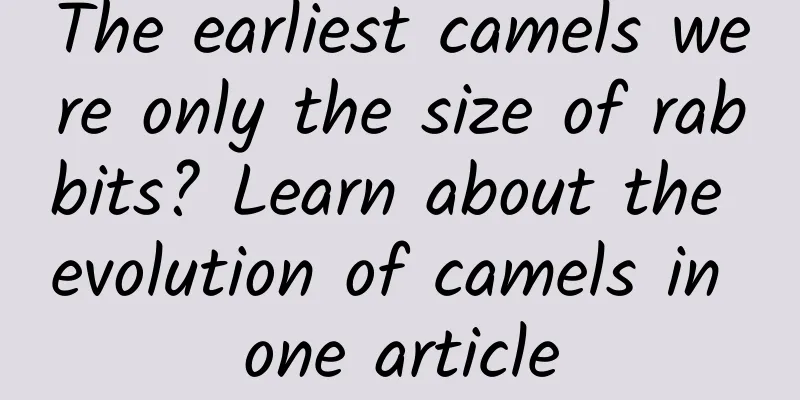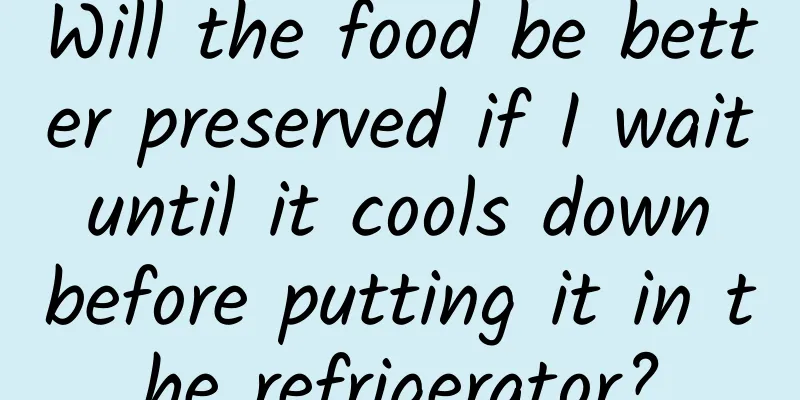She protected 242 gorillas and spent her life alone in the forest

|
In the early morning of December 27, 1985, zoologist Dian Fossey, who studied gorillas, was murdered in her cabin. When she was found, she was lying in a pool of blood, her face was slashed and split at the corner, and her pistol and unused ammunition were on the floor. Only the big hole in the wall showed that the attacker broke in - and who the murderer was remains a mystery to this day. For the past 18 years, Fossey has lived with gorillas in the forests of Rwanda, spending almost her life studying and protecting mountain gorillas, but her approach to fighting poachers has been controversial. Fate will always intersect with the gorillas in the mountains again Born in San Francisco, USA in 1932, Fossey has been interested in animals since she was a child. She has always wanted to travel to Africa because in that wild continent, animals can live freely in the wild without being confined. Dian Fossey Gorilla Fund Fossey did not engage in animal research. After graduating from college, she worked as an occupational therapist in a children's hospital. But she did not give up her obsession with Africa. She continued to save money quietly and read all the books about Africa she could find. Her favorite book was "The Year of the Gorilla" written by zoologist George Schaller. It was this book that made her want to see the rare mountain gorillas with her own eyes. In September 1963, Fossey borrowed money from the bank and finally set foot on the African continent, which he had long dreamed of, and saw the gorillas. Mountain Gorillas | Dian Fossey Gorilla Funds In her memoirs, she recorded her first encounter with a gorilla: "The sound preceded the sight, and the smell preceded the sound, an overwhelming musky, human-like scent. The air was suddenly rent by a series of high-pitched screams, followed by the rhythmic chest-beating thumps of a large male silverback gorilla in the thick forest. Joan and Alan, ten yards down the trail, motioned for me to stay still. We both froze until the echoes of the screams and chest-beating died away. Only then, under the cover of the bushes, did we slowly crawl to within 50 feet of them. Peeking through the vegetation, we saw a group of black, furry primates staring at us, with thick eyebrows and bright eyes staring at us nervously below, trying to tell if we were friend or foe. At that moment, their huge, magnificent black figures against the green background of the woods deeply shocked me. " Fossey was fascinated by these unique creatures and felt it was her destiny to one day cross paths with mountain gorillas again. Fortunately, during this trip to Africa, she met the famous anthropologist Louis Leakey, who enthusiastically introduced her to Jane Goodall's work on chimpanzees and told her how important long-term field research on great apes was. Fossey met anthropologist Louis Rich, who admired her very much | Dian Fossey Gorilla Fund After the trip, Fossey continued to work and tried to pay off the huge debt left by the trip. Unexpectedly, Rich later found her and invited her to participate in a long-term field study of gorillas. However, Rich made a strange request: Fossey had to remove her appendix before starting the study. Fossey, who was obsessed with gorillas, was ecstatic about the invitation and agreed to all the requests. She quickly made an appointment to remove her appendix, but after the operation, Rich said, "You don't need to remove your appendix. I made this request just to test your determination." Become a gorilla observer and recorder After getting the start-up funds for the research, Fossey immediately quit her job, said goodbye to her parents, friends and three dogs at home, and went to Africa alone, with only "The Year of the Gorilla" and a Swahili grammar book to accompany her. Dian Fossey's home in the camp | Dian Fossey Gorilla Fund In the Virunga Mountains of Rwanda, she established the Karisoke Research Center. In the camp, a 2-meter by 3-meter tent is her bedroom, office, bathroom and clothes drying area. In this way, she began to spend 18 years with gorillas. At first, the gorillas would run away when they saw Fossey, so Fossey had to hide behind bushes and wrap a telescope around vines to observe the gorillas quietly. This way she could observe the gorillas' natural behavior. Once, Fossey saw 16 gorillas sunbathing, but when she approached, they retreated nervously and tried to hide. In order to better observe them, Fossey decided to climb a tree. But the tree was tall and slippery, and she had a hard time climbing, and she made quite a noise. When she climbed up the tree, she was very frustrated, thinking that the sound of her climbing the tree must have scared away the gorillas. Unexpectedly, when she looked down, all the gorillas who had been hiding were sitting in a row under the tree, like the front row of the theater, curiously looking at this clumsy tree-climbing novice - curiosity and novelty obviously made them overcome their fear. Dian Fossey working in the mountains | Dian Fossey Gorilla Fund Gorillas in the same group always look alike, but just as humans have unique fingerprints, gorillas also have different "nose prints" - the shape of the nostrils and the depressions on the bridge of the nose. Close-up photography was not widely used at the time. In order to quickly distinguish gorillas, Fossey even developed an ability to quickly draw sketches of nose prints while observing through a telescope. These sketches were extremely valuable for research at the time. Fossey gradually figured out how to get the gorillas used to her. She would imitate the various sounds the gorillas made when they were doing different activities, and she would crawl like the gorillas, sitting in contact with them and keeping her eye level with theirs. This made the gorillas more relaxed and understand that Fossey was not an intruder. Puck, a young female gorilla, greets Fossey upon seeing her, who responds with a friendly gorilla call. | Dian Fossey Gorilla Fund Dian Fossey gave each gorilla a name. This strong male gorilla was named "Uncle Bert," after her uncle who had been supporting her education. In this way, the gorillas gradually got used to this human in blue jeans, and Fossey was able to record and study their behavior every day. She loved the gorillas like a family member, but she also maintained a distance that a researcher should have, and was only a loyal observer and recorder. She wrote in her memoirs: Any observer is an intruder in the wildlife field, and must remember that the rights of animals are more important than the interests of humans. Dian Fossey and her memoirs | Dian Fossey Gorilla Fund Fossey's memoir, Gorillas in the Mist, is more like a record of the life of mountain gorillas than a biography of her own life. The book describes in detail the habits, diet, daily activities and the changing status of each gorilla in the group, and still provides valuable first-hand information for researchers. The beloved gorilla died from the spear of a poacher However, Fossey also witnessed firsthand the harm done to the gorillas by poachers during her daily stay with them. She saw poachers and hunting dogs countless times in the forest, as well as the traps they set in the jungle. Once, a young gorilla less than 4 years old accidentally got caught in a metal noose. Although he finally broke free, the wire was still wrapped around his ankle. Later, the wire gradually embedded in his flesh caused gangrene, and he also suffered from pneumonia. Although the gorillas in the tribe slowed down their pace so that he could keep up with the main group, he died 60 days later due to his increasing weakness. In addition to fighting between gorillas, human poaching is the biggest cause of their death or injury. Whenever they see poachers approaching, Fossey and his assistants will quickly drive away the gorillas; whenever they see animals trapped in traps, they will lend a helping hand. However, countless animals still fall into the clutches of poachers. Fossey adopted two orphaned gorillas whose entire tribe had been killed by poachers. Fossey named the two orphans Coco and Pucker, and placed them in a place separated from her bedroom by a wire fence. She fed them and gave them medicine every day, accompanied them to sleep and bask in the sun, and took them to play and forage in the jungle. Coco, Parker and Fossey | References [1] Koko and Parker were always afraid of the open grass between the camp and the jungle. Whenever they crossed the grass, Koko had to be held by Fossey, and Parker would hang on her back or legs. Fossey tried to encourage Koko to walk on her own, but Koko, who was left behind, would start crying and screaming sadly, waiting for Fossey to pick her up. At that time, the warmest scene in the camp was Fossey and the two young gorillas playing in the sun. Coco and Parker competed for Fossey's embrace. Their combined weight was 100 kilograms. References [1] In addition to Koko and Parker, who he raised himself, the male gorilla that Fossey paid the most attention to was named Digit. The name means "finger" because Digit's middle finger was broken. When Fossey first saw him, he was only about 5 years old and often chased and played with his sisters. When he was 9 years old, his three sisters died unexpectedly. He could not play with one- or two-year-old children, nor could he integrate with older females. Without playmates, he turned to humans and looked forward to the arrival of researchers every day. Dian Fossey Gorilla Fund As Digit interacted with humans, he gradually learned to distinguish the gender of humans. He would playfully bump into men, but would be shy when he met women. He was fascinated by human belongings, and always liked to touch and smell thermoses, notebooks, and cameras before returning them to humans. To Fossey's surprise, Digit once recognized his own reflection in her mirror. Gorillas are often curious about human belongings, but they handle them very carefully. They are very interested in camera lenses, in which they can see their own reflections. | References [1] As Digit grew up, he began to take on the responsibility of protecting the group and stopped getting close to humans. Fossey also respected his independence and rarely disturbed him. However, the good times did not last long. In 1977, Digit was killed by poachers with five fatal spear wounds. In his last lonely battle, he protected his family, partner and unborn child, and even killed a poacher's dog. Fight poaching like a "scary witch" Digit's death left Fossey heartbroken and determined to take more radical action to fight poaching. At that time, the Rwandan government advocated a conservation strategy of educating local people to respect gorillas and promoting tourism. But Fossey believed that such a gentle conservation approach could not solve the urgent problem: "They don't realize that the remaining 200 gorillas and other wild animals are struggling to survive every day. They don't have time to wait. It only takes a trap or a bullet to kill a gorilla." Local poachers in Rwanda | References [1] Fossey began to implement her own anti-poaching strategy, which she called "active conservation", but its cruelty is still controversial. She established the Digit Fund, set up an anti-poaching team, and purchased equipment. When she caught poachers, she would burn their property, even kidnap their children, and whip their genitals with nettles; she also used the beliefs of the locals to intimidate poachers and torture them mentally. She was considered a "terrible witch" by the locals - rather than being purely anti-poaching, her methods were already full of obvious hatred. Her hatred was not even limited to poachers. She did not like anyone who invaded the camp and gorilla territory, including tourists. She used a pistol to intimidate tourists, hoping that the authorities would give up tourism and transfer funds to her active conservation strategy. For this, she was punished by the government more than once. Even Jane Goodall, who called Fossey a good friend, could not tolerate her extreme methods. In addition to the torture of poachers, Fossey had another controversy - she was inhumane and even had racist tendencies of white supremacy. In her memoirs, she wrote down the names of each gorilla, but the local employees and assistants who worked with her day and night rarely mentioned their names, and were only referred to as "my Africans". In the eyes of her employees, she was a tough, impersonal boss with an arrogant attitude and frequent insults. People who were employed by her once commented: "I think she likes gorillas more than people." Fossey and the Locals | Dian Fossey Gorilla Fund We cannot agree with Fossey's extreme anti-poaching strategies, but we cannot deny that her methods are effective. The four-person patrol team she established destroyed 987 snares in a few months; in the same period of time, the 24-person team of the national park did not destroy a single snare. The Rwandan government also allocated more land around the national park, allowing the gorillas to expand their territory. Jane Goodall also said: "Without what Diane did, there would be no gorillas in Rwanda." Before Fossey's 54th birthday, she was murdered in her own cabin, abruptly ending her turbulent life. This murder case shocked the world, and it is still unclear who the real murderer is. After all, Fossey had too many enemies - poachers who were hostile to her, employees who were dissatisfied with her, and politicians who disagreed with her... Fossey is now buried alongside her beloved gorilla, Digit, on a tombstone bearing the name given to her by the Rwandans - Nyiramacibili, which means "woman who lives alone in the forest". Fossey is buried next to Dygit, with a tombstone that reads: "No one loved gorillas more than she did." | Dian Fossey Gorilla Fund The legacy that Fossey left to the world, in addition to the precious research data from her 18 years, is the 242 mountain gorillas she protected. Rwanda, where she has been working, is the only country where the number of mountain gorillas is growing. Today, there are about 900 mountain gorillas on the earth, about half of which live in Rwanda's Volcanoes National Park, where Fossey is buried. References [1] "Gorillas in the Mist" Dian Fossey [2] World-renowned primatologist Dian Fossey is found murdered in Rwanda - HISTORY [3] Dian Fossey (webster.edu) [4] Dian Fossey's Living Legacy: The Mountain Gorillas of Rwanda (nationalgeographic.com) [5] The Renegade Scientist Who Taught Us to Love Gorillas (nationalgeographic.com) [6] It's time to stop lionizing Dian Fossey as a conservation hero — Lady Science [7] Dian Fossey: Gorilla researcher in the mist | Science | In-depth reporting on science and technology | DW | 26.12.2015 [8] Why was Dian Fossey killed? - CSMonitor.com [9] Dian Fossey Biography - Dian Fossey (gorillafund.org) [10] Dian Fossey - Death, Gorillas & Movie - Biography Author: Cat Tun Editor: Mai Mai This article comes from the Species Calendar, welcome to forward If you need to reprint, please contact [email protected] |
>>: Stick to your dreams and strive for excellence - Proposal to women scientists nationwide
Recommend
Apple Pay enters China: UnionPay’s first step in turning around mobile payments
[[129850]] The red envelope war during the Spring...
Summary of the channel characteristics of advertising on Momo, iQiyi, Kuaishou, etc.!
What are the characteristics of information flow ...
The third AIDS patient was "cured"! Can humans finally conquer AIDS?
On February 15, American researchers reported the...
Today I will tell you: What strange things have happened to the rose?
At both ends of the Eurasian continent, breeders ...
How to analyze user activity data?
In this article, I will analyze user activity dat...
Luquan SEO Training: What to do when SEO encounters problems? Do you understand the knowledge of SEO optimization?
Many people have performed SEO optimization for t...
Let’s go and see the Grand Canal!
Open China map We will find the great rivers in e...
A review of the firsts in meteorological history: the "Luyang Silver Pearl" you don't know
In 1996, my country's first new generation we...
With the trend of social e-commerce, has KOL marketing become a new traffic entry point?
Why do Chinese companies choose KOLs as their fir...
Free resources that APP promotion novices must know
Free resources that app promotion novices must kno...
5 aspects to understand about short video operations!
Where there are users, there is a market; where t...
SpaceX Starship vs. Saturn V, the showdown of the century, Musk's dream of Mars is on the way (1)
(This article is a bit long and is planned to be ...
The more an ad looks like information, the more likely it is to be clicked? Please stop hurting your users.
There is a saying in current information flow ads...
Keep the moral bottom line: 15 kinds of "rogue" methods of APP promotion
Rogue promotion methods are methods that some man...
The programmer's secret equation, how many can you create?
[[135027]] If you are a programmer, or you know p...









